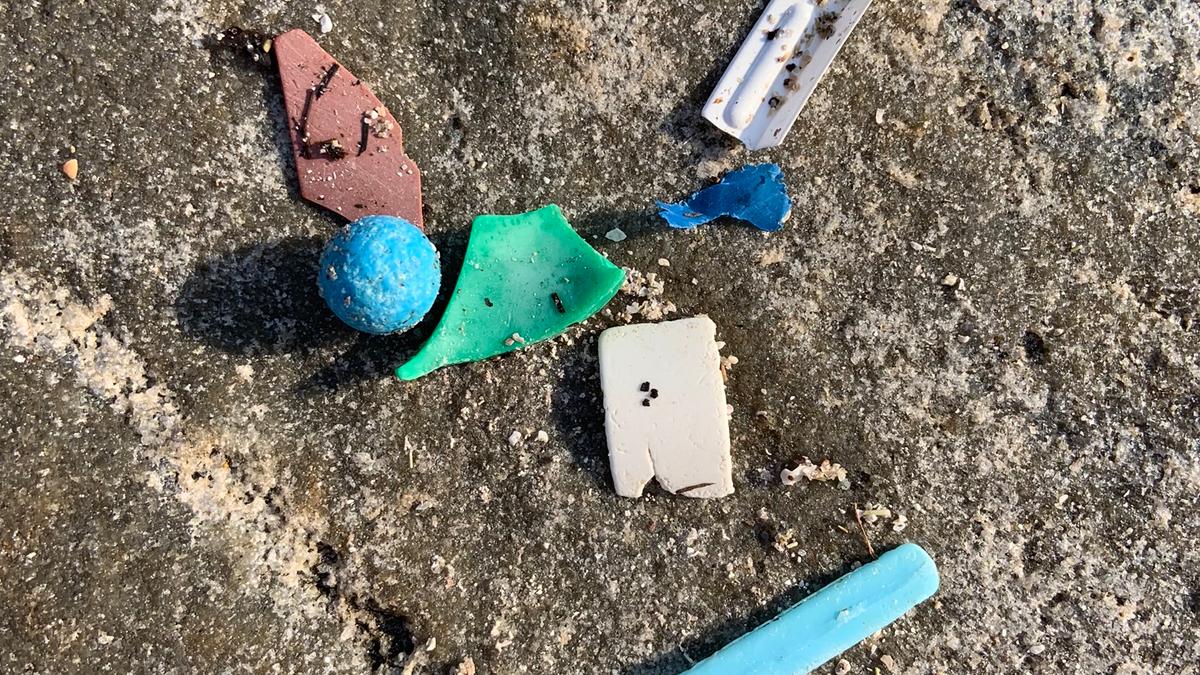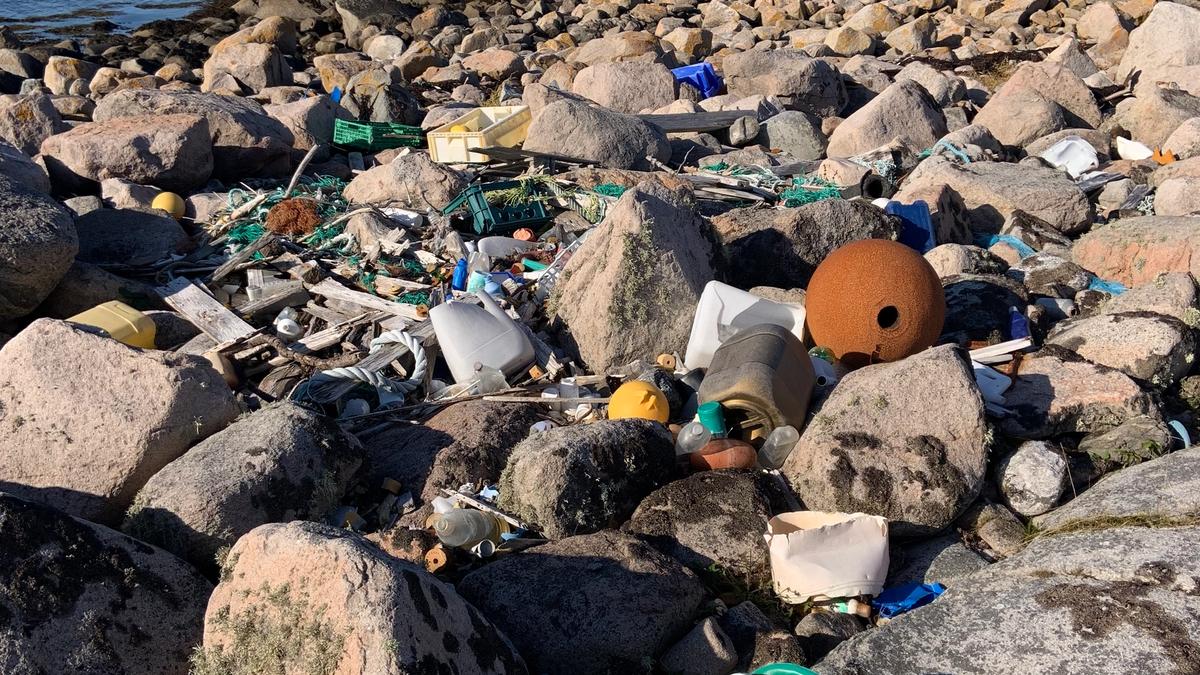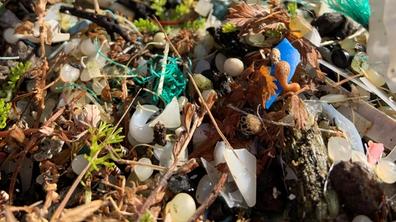Macroplastics are marine litter that is larger than approximately 0.5 centimetres. Macroplastics consist of a large variety of plastic, from small plastic fragments to large objects such as shipwrecks and trawl bags. Macroplastics are often recognisable objects, but some macroplastics are also unidentifiable plastic fragments.
The plastic cleared up along the coast and in the sea is macroplastics. Examples of macroplastics that are frequently cleared up in Norway include rope fragments, polystyrene pieces, plastic packaging, jugs, nets, cigarette butts and plastic bottles. Macroplastics provide important information about waste that has gone astray in nature, and we can use this information to identify sources and initiative preventive measures. Less macroplastics will also help reduce the risk of animals becoming stuck in or digesting plastic.

Macroplastics are broken down into smaller and smaller pieces
When clearing up macroplastics, litter is generally prevented and, by removing microplastics, one of the main sources of microplastics and nanoplastics in the sea is also reduced. In the sea, macroplastics are affected by natural forces over time and are broken down into increasingly smaller parts. Macroplastics go from being visible waste to pollution of the marine environment that cannot be seen (microplastics and nanoplastics) and that is difficult to remove. Throughout this process, new macroplastics with a greater risk of environmental impact than the original product also arises. One example of this is rope stumps. The braiding comes undone and turns into many individual strands that become invisible in the water, before ending up in the stomachs of fish, marine mammals, or birds.
The sea of data relating to macroplastics
Data relating to macroplastics is obtained through clean-up operations organised by Rent hav and Rydde in Norway. Several mapping projects have also been conducted and monitoring is also carried out through OSPAR. Globally, data collection takes place through various initiatives, but also monitoring, mapping and research to gather knowledge of where plastic originates from, how it moves through nature and how it is broken down over time. The methods for the collection of data relating to macroplastics vary and there is therefore a need to reconcile the data collected nationally and internationally.




